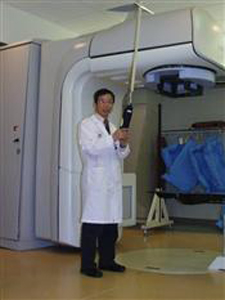Program Information
Extracting Patient-Specific Radiobiological Parameters From Tumor Regression for Biologically-Based Adaptive Radiation Therapy of Head and Neck Cancer
A Tai*, C Schultz, X Li, Medical College of Wisconsin, Milwaukee, WI
SU-E-CAMPUS-J-5 Sunday 3:00PM - 6:00PM Room: Exhibit HallPurpose: Biologically-based treatment planning is often hindered by the lack of reliable model parameters, especially for an individual patient. The purpose of this study is to extract patient-specific radiobiological parameters based on tumor volume regression observed during radiation therapy (RT) delivery.
Methods: Tumor regression data were obtained from daily diagnostic-quality CTs acquired during IGRT using a CT-on-rails (CTVision, Siemens) for 28 patients with head and neck cancers who were treated with IMRT to 70Gy in 2Gy fractions with concurrent chemotherapy. A two-component model built under the assumption that tumor cells comprise both radiosensitive and radioresistant components was proposed and used to analyze the tumor regression data. The model consists of 4 parameters: radiobiological parameter (αs), potential doubling time for the radiosensitive cells (Td), initial fraction of radioresistant cells (h) and the disintegration half-life of radiation-damaged cells (TDis). These paramters for a particular patient were estimated by fitting the model to the tumor regression data observed in the early part of the treatment course for the patient, then, tested by comparing the clinical data with the model predictions of tumor regression for the rest of treatment based on the parameters estimated from the early part of the treatment.
Results: The proposed model with the newly estimated patient-specifc model parameters predicts individual tumor regression reasonably well. Significant variations of the model parameters were found between patients. For example, for the patient data studied, αs varies between 0.07 to 0.22 Gy-1, Td changes from 2.4 to 13.4 days, h is about 50%, and TDis varies between 0.5 and 10 days.
Conclusions: The tumor regression observed in the early part of IGRT for head neck cancer can be used to estimate patient-specific radiobiological parameters, which may be used for biologically-based adaptive replanning for the remaining part of the treatment.
Contact Email:


